







| Yellow Weevil (Lixus iridis (Olivier, 1807)) |








|
|
Scientific name: Lixus iridis (Olivier, 1807) Common name: Yellow Weevil French name: Lixe des ombellifères Order: Coleoptera Family: Curculionidae Wingspan : 12-17 mm. Biotope: Places with many umbellifers, in particular damp meadows and marshes. Geographic area: Europe, the Caucasus, western Siberia, Asia Minor. Observation period : May to September. The larva grow in umbellifer stems. The eggs are laid in June and hatching occurs in August. |
The Yellow Weevil (Lixus iridis) is a rather large size curculionidae with a lengthy body. It is covered with a very short yellow greenish pubescence. Old insects appear darker. The rostrum is cylindrical and very lightly curved. It is as long as the protothorax. The antennae show a rather long scape, the two first articles of the funicle of equal length and an oblong-shaped clubbed tip. The protothorax bears three dark longitudinal stripes but often hardly visible. The elytra, wider than the thorax, show thin grooves made up with an alignment of rather large pits. The intervals between grooves are flat. The elytra have parallel edges up to the last rear third. Then they tapper to form two sharp slightly divergent pointed tips, called mucrones. The legs are thin with slightly swollen femurs. Among the numerous Lixus species that you can observe in France, only 4 of them show a size equal to or exceeding 17mm. Lixus pulverulentus and Lixus scolopax do not show the same sharp mucrones than Lixus iridis. Lixus angulus shows well marked dark longitudinal stripes which are not found on Lixus iridis. |
| [To know more about the Yellow Weevil] [Next picture] [Top] |
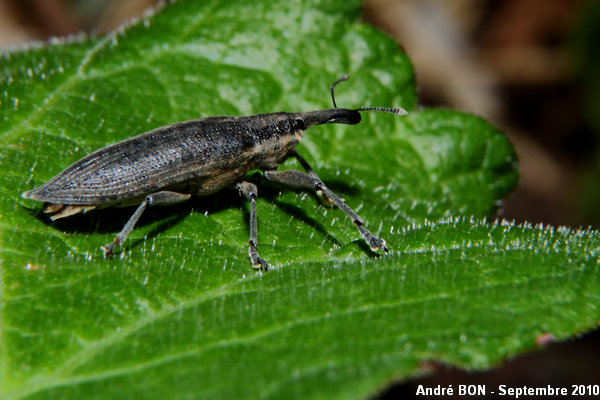
|
You can explain the dark colour of this Lixus iridis by its age. Specimens observed in spring are yellow. This insect has not been very shy and I have been able to shoot pictures with different angles of view. |
| [To know more about the Yellow Weevil] [Next picture] [Previous picture] [Top] |
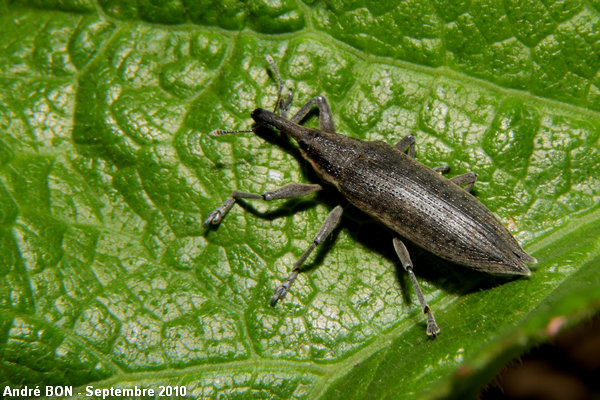
|
Here is a top view where we can see the pointed and slightly divergent mucrones. |
| [To know more about the Yellow Weevil] [Next picture] [Previous picture] [Top] |
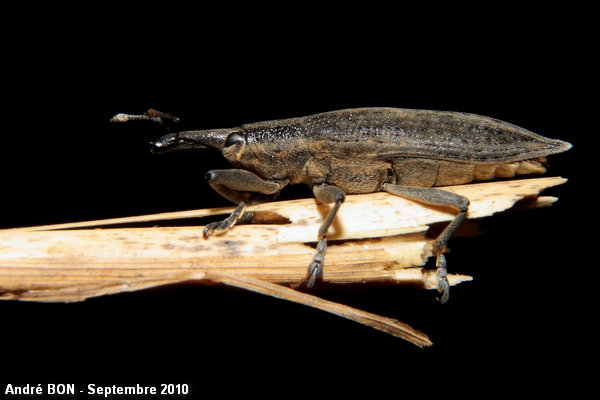
|
I have lifted the Lixus on a twig to easily shoot a close-up view. |
| [To know more about the Yellow Weevil] [Next picture] [Previous picture] [Top] |
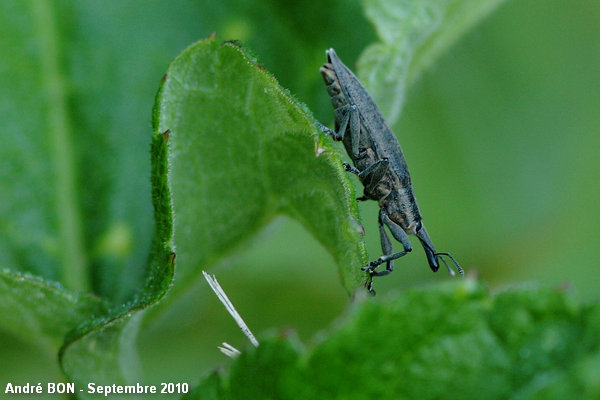
|
This Lixus iridis, observed the day before, has been found at the same place the next day in the morning. |
| [To know more about the Yellow Weevil] [Next picture] [Previous picture] [Top] |

|
Here is one specimen with its beautiful yellow spring colour. |
| [To know more about the Yellow Weevil] [Next picture] [Previous picture] [Top] |
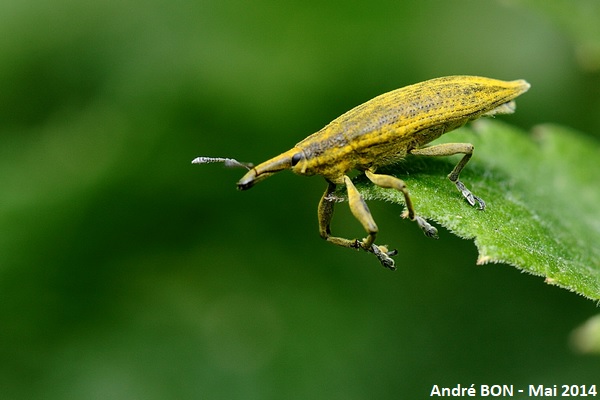
|
Equilibrist. |
| [To know more about the Yellow Weevil] [Next picture] [Previous picture] [Top] |
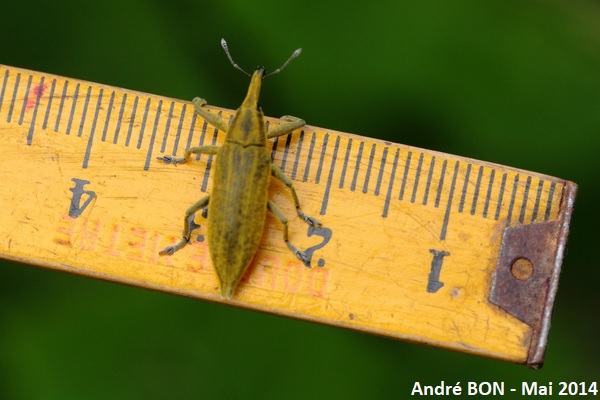
|
I have measured 19 mm here from the tip of the roster to the mucrones. |
| [To know more about the Yellow Weevil] [Previous picture] [Top] |

|
Close-up view on the antenna showing the long scape and the oblong-shaped clubbed tip. |